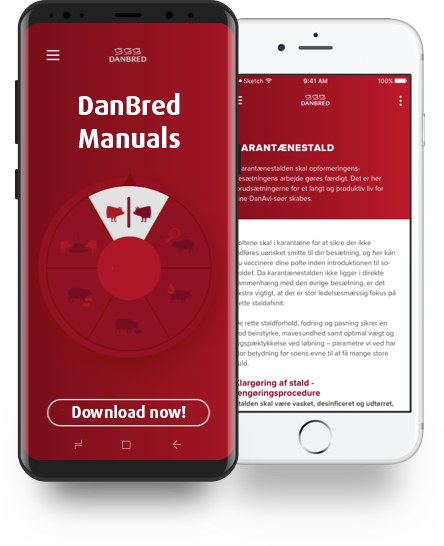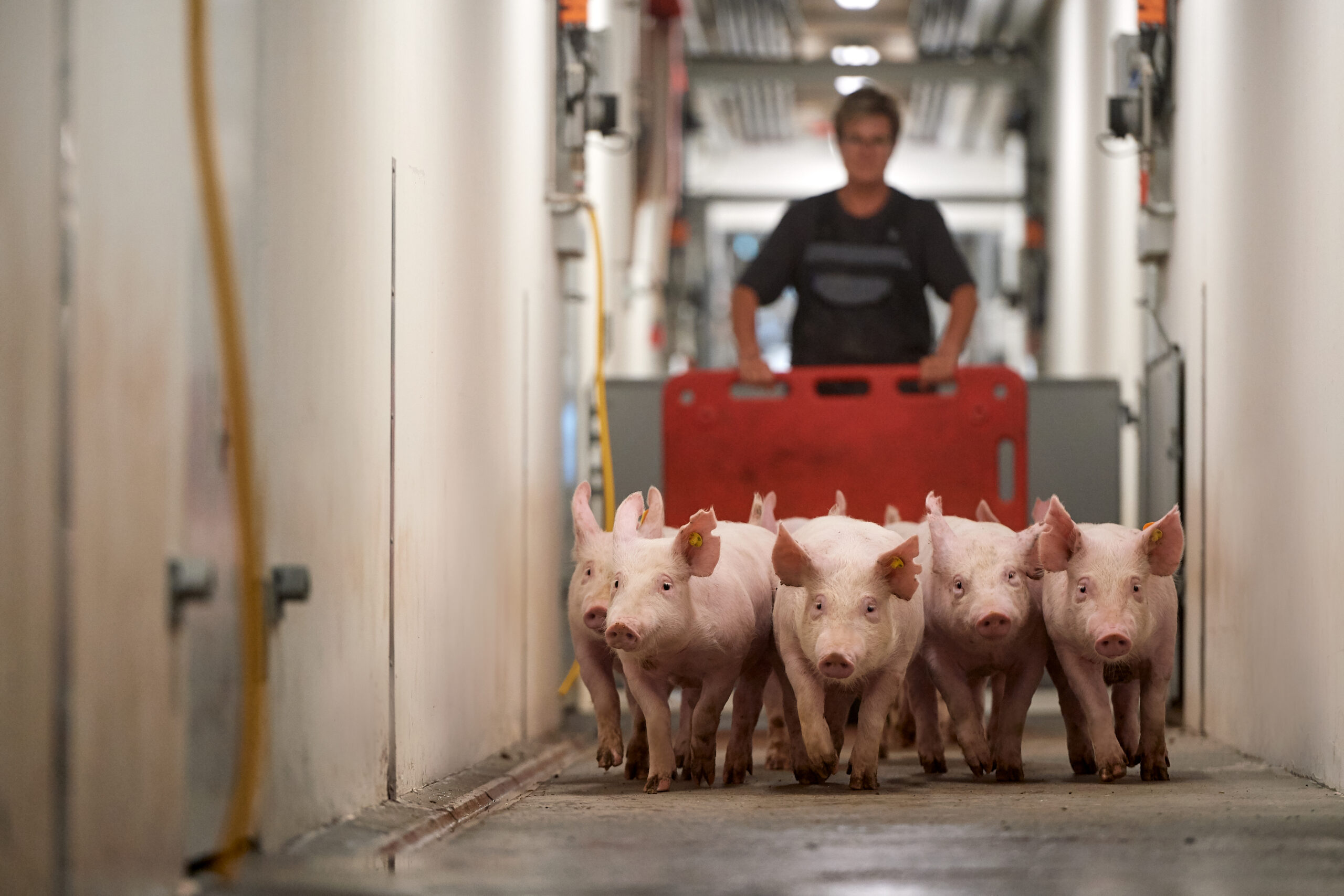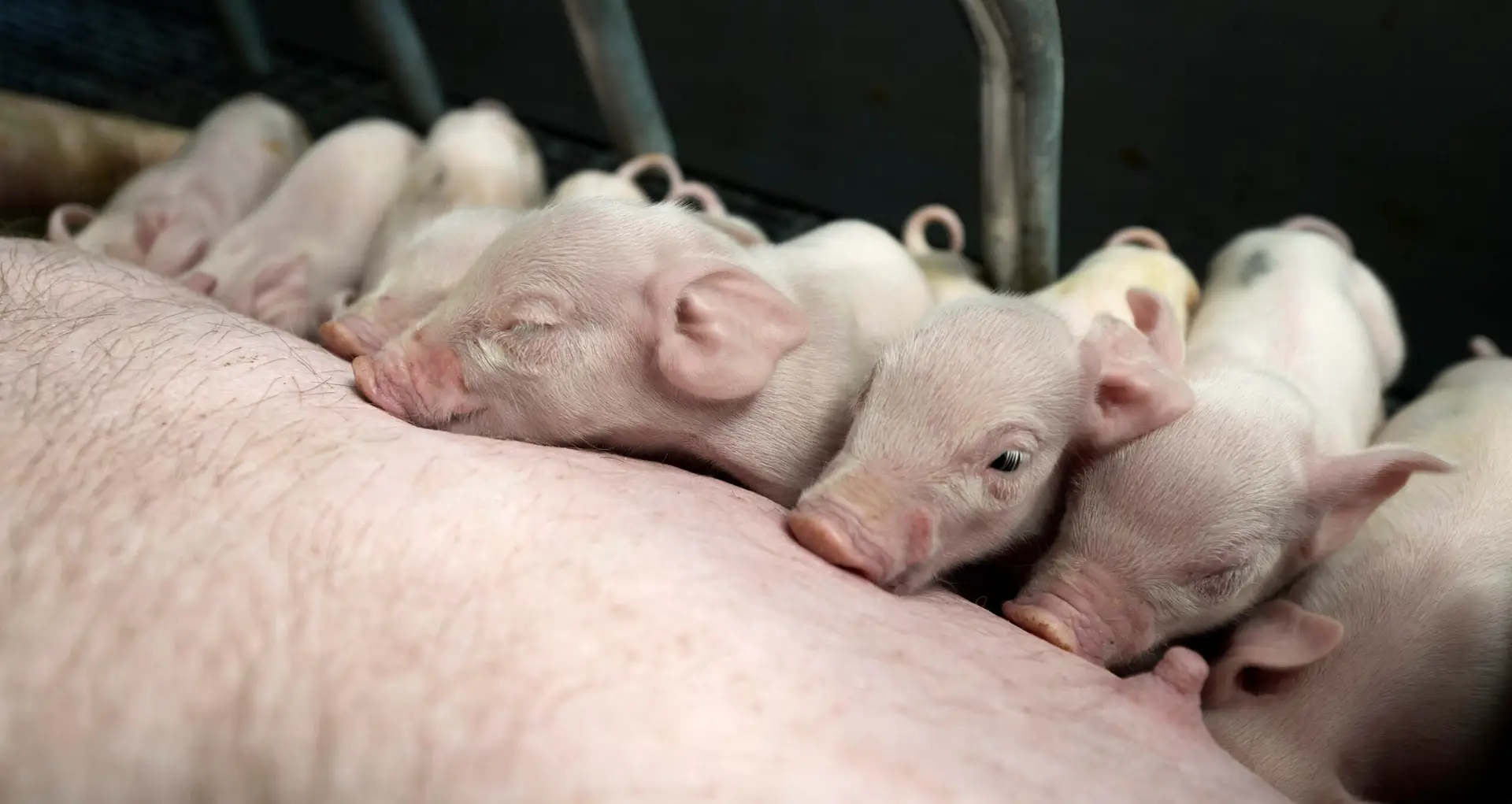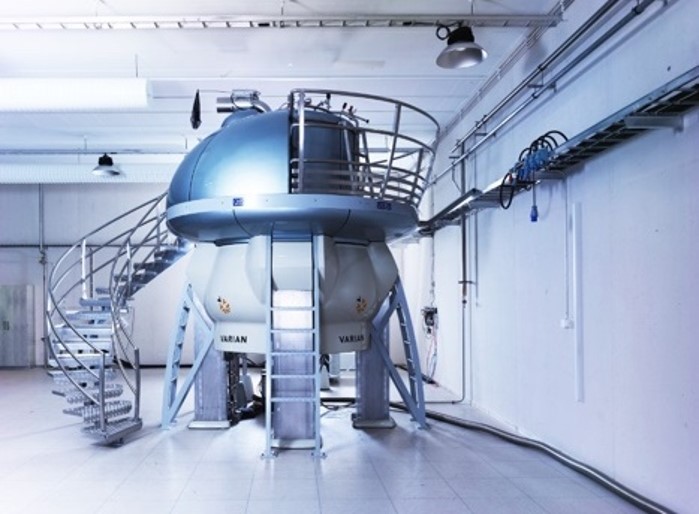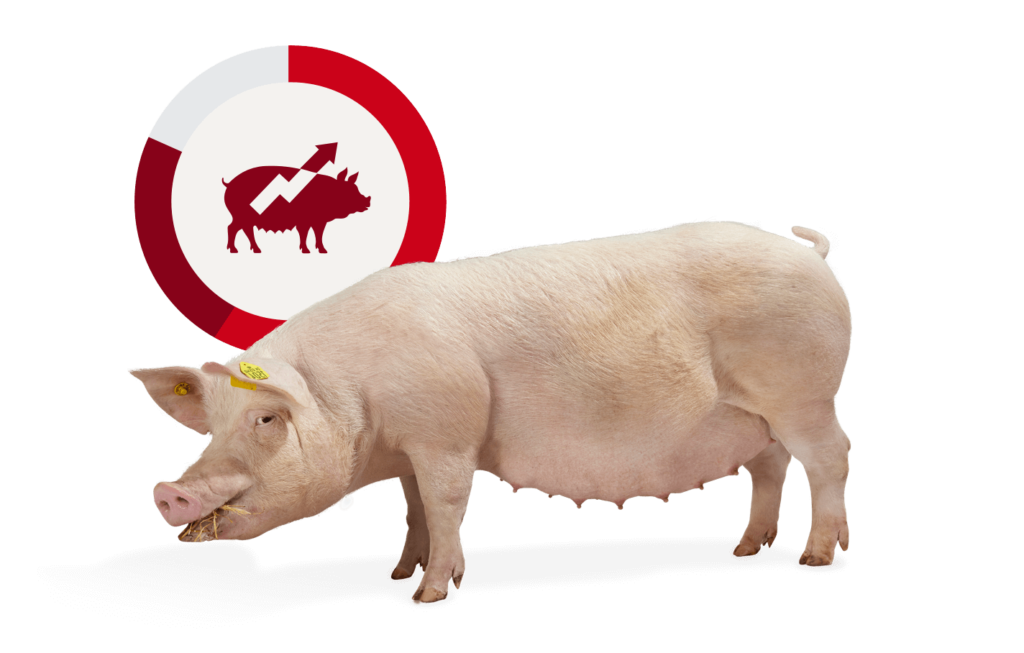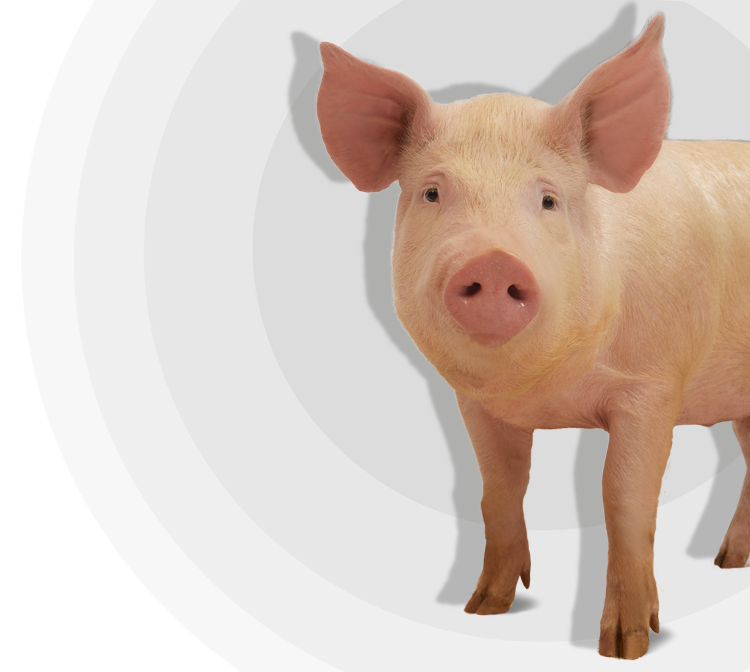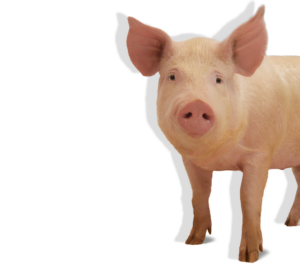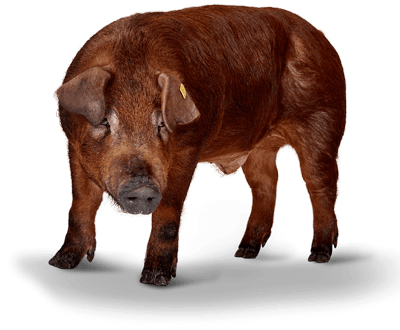By Flemming Thorup, DVM, Senior Scientist, SEGES Pig Production, Livestock Innovation, [email protected]
Abstract
Managing a sow with less piglets than milk glands is simple. When the number of piglets at the sow exceeds the number of milk glands, you need to improve your management.
Management in the farrowing unit can be divided into 4 parts.
- Taking care of small new born piglets
- Adjusting litter size to the capacity of the sow
- Managing the piglets day 1- 7
- Managing the piglets day 8 untill weaning
Keywords: piglets, litter size, colostrum, management, nurse sows
Relevant knowledge about DanBred sows
DanBred sows are very prolific and need a special management to achieve their full potential.
DanBred sows produce colostrum during the first 24 hours after birth of the first piglet. Thus, any piglet that you transfer to this sow before 24 hours will obtain maternal antibodies, if the piglet does drink colostrum. But if you transfer a new born piglet to a sow that has nursed piglets for more than 24 hours, this piglet must have obtained colostrum before transfer.
Sows and piglets do not recognize each other until they are 48 hours old. Therefore, piglets can be transferred between sows until the piglets are 48 hours old. You can still transfer piglets between sows when they are above 2 days old, but the piglets will lose some growth potential, which reduces weaning weight in your herd. Anyway, it is better to remove a piglet being more than 2 days old, and that does not thrive, than to let it die. Use a collecting sow for collecting these piglets.
DanBred piglets are strong and uniform. They will be weighing between 500 gram and 2 kg. You can expect a piglet weighing 500 grams at birth also has the potential to be weaned.
A large DanBred piglets has obtained colostrum when the piglet is 8 hours old. After this, you can transfer the piglet to a sow, which is no longer producing colostrum. It is better, that a small piglet obtains colostrum from another sow in the herd, than a small piglet does not obtain colostrum in a large litter at the mother. DanBred sows produce enough colostrum to support 50 piglets with maternal antibodies. If a piglet drink colostrum, then this piglet will be protected against diseases.
The DanBred sow does not produce enough milk the first day to support 20 or more piglets with the energy needed to survive and grow for the first 24 hours. Thus, supplementary milk or the use of nurse sows is needed to support some of the piglets with extra milk after birth.
After farrowing: Obtain an overview over new born piglets
When using DanBred sows, it is not a question if you have surplus piglets after farrowing, but how many surplus piglets you need to handle. Start checking the sows that have farrowed. Help weak piglets to the udder to get colostrum. Write down the number of functional teats (this can be registered before farrowing on the sow card), total live piglets and number of small piglets to handle. Furthermore, make a note if the sow will be a good mother to small piglets, or if the sow is sick or “of feed” and should be treated.
After farrowing: Handling the small piglets
A piglet with a birth weight of 500 gram has a fair chance to survive. In the large litter, the smallest piglets are challenged by the competition for colostrum, and generally piglets of 500-700 gram should be given extra care at a “small nurse” described below. See, what survival you can expect, in the different weight groups in figure 3.
The “small nurse” sow for small piglets
This sow is preferably a 2nd or a 3rd parity sow. The teats in both rows must be easily accessible for the small piglets. The small nurse can be made in two ways.
1: The “late small nurse”
If the last piglet born to the small nurse is 8 hours old or more, these piglets has obtained maternal antibodies with the colostrum ingested. Thus, they can be transferred to a good nurse sow, although this sow does not produce colostrum anymore. The “late small nurse” will not support the small nurse piglets with maternal antibodies. These antibodies they must have obtained at their own mother.
How to use a “late small nurse”
- Take all piglets weighing above 800 grams away from the “late small nurse”.
- Fill up the litter to 14 small piglets, if the sow has 14 or more teats.
- The added piglets must have achieved colostrum from their own mother. (Read about colostrum in another DanBred manual.
- During the first two days, you can add a new piglet, if a piglet at the “late small nurse” dies.
2: The “early small nurse”
The “early small nurse” will supply the small nurse piglets with maternal antibodies. Within 24 hours after birth of the first piglet, you can add new born nurse piglets to the sow. At the “early small nurse” the small nurse piglets will have a better chance of obtaining colostrum, than the small piglets would have in a large litter of new born piglets.
How to use an “early small nurse”
- Take all piglets weighing above 800 grams away from the late small nurse.
- If the large piglets are less than 8 hours old, then they may not have obtained enough maternal antibodies. They must be transferred to a sow that has farrowed less than 24 hours ago.
- If the large piglets are more than 8 hours old, you can expect, that they have obtained enough maternal antibodies to be protected against diseases. These piglets can be transferred directly to a nurse sow.
- Now add the small new born piglets to the “early small nurse” to a litter size of 14 small piglets.
- If a piglet at the “early small nurse” dies during the first two days, you can add a new small piglet, if this piglet has achieved colostrum at their own mother.
- Piglets at a small nurse are small and need extra care to keep warm. See figure 1, how to optimize the pen for the smallest piglets. Avoid draught and humid floors. A cover over the heating pad increases temperature. A curtain reducing the height of the entrance to the room for piglets is helpful. See figure 1.
After farrowing: Handling the surplus piglets using a “two step nurse sow”
See the concept in figure 2. To make the “first step nurse sow”, you wean all piglets in a litter that is ready to be weaned. This “first step nurse sow” must have nursed many piglets well.
To make the “second step nurse sow” you find a 1st or 2nd parity sow, that has nursed piglets for 4-8 days.
Now move the “first step nurse sow” from the “ready to wean”-section to the section of the 4-8 days piglets and transfer all the 4-8-day piglets from the “second step nurse sow” to the “first step nurse sow”. Now the “second step nurse sow” is ready to receive large surplus piglets that are at least 8 hours old. You can give the “second step nurse sow” as many new piglets, as she gave away to the “first step nurse sow”.
As piglets are more prone to transmit disease than a sow, all piglets should stay in the section, where they were born. As sows will have developed immunity to most of the diseases in your herd, it is safer to move the nurse sows to the sections, where they are needed.
Good to know about the DanBred “two step nurse sows”
The two step nurse sow consists of a “first step nurse sow”, where you wean a sow to have extra milk glands for extra piglets, then you transfer 4-8 day old piglets to this “step one nurse”, while the 4-8 day sow receives new born piglets after they have obtained colostrum.
The “first step nurse sow” receives a litter of strong piglets with a fixed nursing order. Thus, they are quick to start nursing, after being introduced to the “first step nurse sow”. You can use any parity as a “first step nurse sow”, if the sow is healthy.
The “second step nurse sow” gives away 4-8 days old piglets, and receives 8-24 hours old strong piglets. These piglets are often collected from several litters, and thus they have not obtained a rank order, but will fight for a good teat while waiting for the first milk let down. This will disturb the sow, so the first lactations never succeed. Our investigations indicate, that a young sow is more patient with new piglets than an old sow, and that a sow in early lactation is superior in receiving young nurse piglets to a sow just having weaned her own piglets.
If you run a two-week system, you may think, that a “second step nurse sow” after 14 days of lactation will be good. This is not the case. The milk production from sow after 14 days of lactation is more like a sow with 21 or 28 days of lactation than like a sow after 4-8 days of lactation. Instead you should use a sow that farrowed early in your batch or late in the previous batch to make a “second step nurse sow” that has been lactating for 4-8 days. If you do not have a sow with 4-8 days of lactation, you may as well wean a litter ready for weaning, and make a “one step nurse sow”, where the new born piglets goes directly to the sow with weaned piglets without involving a second step.
If you handle the DanBred nurse sows gently, you will rarely see the sow reject the nurse piglets. In the case of rejection, you will need to introduce a new nurse sow.
If the DanBred nurse sow is loose housed in the farrowing pen, you may experience, that one of 30 “second step nurse sows” does not accept to be a nurse sow and must be substituted by another nurse sow.
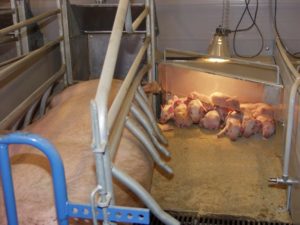
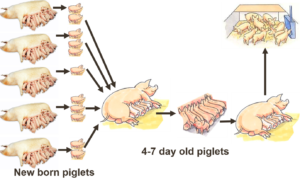
Extra care to small piglets
In general, you can expect to handle one small piglet per litter. DanBred sows are different from other genetics, as piglets weighing 800 grams does not need special treatment. Small piglets below 800 gram may need extra care to survive until weaning. Piglets weighing 500 grams and above at birth should be given a chance. Small piglet that are already at the udder of the sow, has a good chance for survival. Small piglet not found at the sow´s udder may need some extra help. If the piglet is weak, give the piglet energy in the form of heating or an oral energy boost. If the piglet is active, help the piglet to the udder, where it can obtain colostrum. The use of a small nurse for small piglets is mentioned above.
For extra care, you can heat up weak small piglets to a body temperature of 38o C, by heating them in a box at 36o C for ½-1 hour. Some of the piglets has been challenged for too long, and have low blood glucose (below 2,8 Mmol/liter). The level of blood glucose can be restored giving the piglet 1 gram of glucose in the mouth. One gram is achieved by giving 5 milliliters of a 20 % glucose solution, or 10 milliliters of a 10 % solution. Commercial products for new born piglets may also be used, if the recommended dose supplies the piglet with enough energy, but they will generally be more costly. Most softdrinks contain energy comparable to 10 % of glucose, and 10 milliliters of a soft drink in the mouth will supply the piglets with sufficient energy.
Managing piglets until day 7
Do not worry if a piglet in a litter is smaller than the rest. This is how biology is supposed to be in the pig. When you have collected the smallest piglets at a small nurse sow and the largest piglets are transferred to a 2 step nurse sows, then we know, that you can leave the rest at the mother, and only sort the piglets to have enough piglets at each sow. In a trial, we did not increase survival and growth by sorting the piglets by size, compared to letting the mother keep the piglets.
Even in a well-functioning litter you may experience, that a piglet does not thrive. Check these piglets for disease, which can explain slow growth and treat the piglet accordingly. If the piglet has no sign of disease, there may be a problem with the rank formation in this litter. In this case, the optimal treatment is to collect the challenged piglets at a collecting sow. A collecting sow weaning her own piglets, and then receiving 14 piglets collected from healthy litters, where one or a few piglets does not thrive.
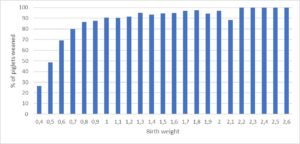
Managing the piglets from day 7 to weaning
After day 7 you can expect the piglets to have developed a fixed teat order at the sow’s udder. Mortality is then low and new runt piglets become scarce. Mortality from day 7 to weaning is primarily due to infections. In case of a too high mortality after day 7, you should consult your herd veterinarian about what diseases causes problems in your specific herd. A specific form of infection is often overseen, as sepsis can be hard to your piglets. Sepsis is caused by bacteria from the environment, that can infect the piglet through any hole in the piglet’s body. These openings can be caused by many factors. See also figure 4.
Possible causes for sepsis in piglets
- Abrasions at the front knee or at the hook caused by the floor causing erosions.
- Scars in the head of piglets due to fighting
- To deep grinding of piglet teeth, or a fractured tooth, if teeth are cut
- Cutting tails using infected tools or making a too large wound.
- Infection after castration

Acknowledgements
Photos in figure 4 are generously provided by DVM Svend Haugegaard and DVM Charlotte Mark Salomonsen at SEGES Veterinary Laboratories.
References
Frandsen, D. P.; Haugegaard, S. 2017. Viden om dødsårsager forbedrede pattegriseoverlevelsen. Erfaring no 1703. Videncenter for Svineproduktion.
Johansen, M.; Nielsen, M.B.F.; Dunipace, S.; Kongsted, H.; Haugegaard, S.; Svensmark, B. og Bækbo, P.; (2015): Årsager til høj dødelighed i 9 besætninger. Meddelelse nr. 1049, Videncenter for Svineproduktion.
Sørensen, T.; Thorup, F.; Nielsen, M. B. F. og Hansen C. F. (2016): Håndtering af kolde grise omkring fødsel. Meddelelse nr. 1087, Videncenter for Svineproduktion.
Thorup, F.; Andersson, M. L.; 2012. Sammenligning af en tidlig og en almindelig mindste-ammeso. Meddelelse nr. 944, Videncenter for Svineproduktion
Thorup, F. Sørensen, A. K.; 2005. Et- og to-trins ammesøer. Meddelelse 700. Videncenter for Svineproduktion.
Thorup, F.; Nielsen, M. B. F.; 2018. Kuldudjævning til egne grise eller grise med ensartet størrelse. Meddelelse nr. 1153. Videncenter for Svineproduktion.


